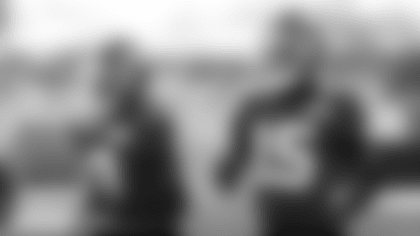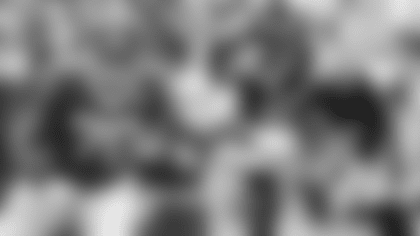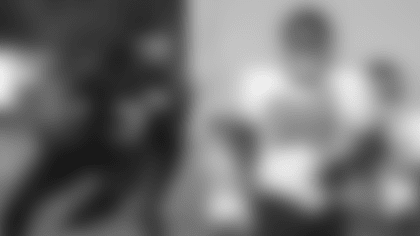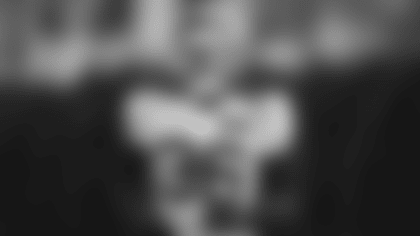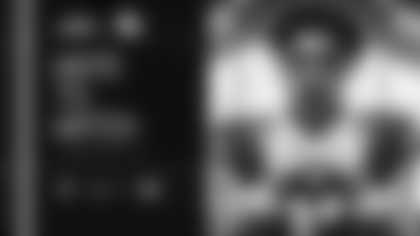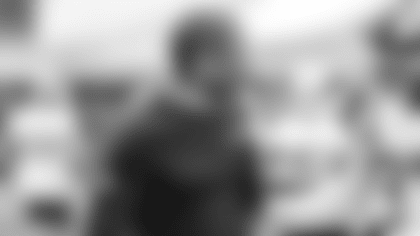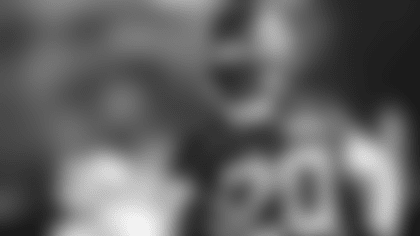Most NFL defenders don't get to score that often. But when they do, they rarely hide their emotions. While The Associated Press called the NFL owners' approval this week of radio communications for defenses "another step forward," David Harris looks upon the new rule as a leap for equality.
"I was excited. It will help the defense out a lot especially in two-minute drills and no-huddle type situations," the Jets' second-year linebacker said Friday of the owners' 25-7 vote that will now allow a defensive player to wear a helmet equipped with a radio.
"The offense has had the advantage — the quarterback can get the signals from the coach through the headset. But the defense has had to look over to the coaches on the sidelines for the signals and then relay it to the rest of the guys on the field."
Now that the league meetings down in Palm Beach, Fla., have concluded, things will be different in 2008. The Jets and their 31 counterparts will have a defender who will be able to listen to a coach's play calls via radio and then relay the call to his teammates. Each club will also have a designated backup if an injury forces the original signalcaller to the sideline. At no point will two players simultaneously be allowed to wear helmets with radios.
"A lot of times the defense is scrambling to get back and you still have to get the call and get it to everybody," Harris said. "The coach has to relay it to the guy giving signals and the guy who receives the signals has to relay it to either a linebacker or the safety."
Harris knows the process better than most. The rookie took over the role of primary defensive signalcaller last year in Game 7 game at Cincinnati and never relinquished the duty. He doesn't know if he'll have the special equipment this season, and he mentioned names like fellow ILB Eric Barton and S Kerry Rhodes as possible candidates. Harris fits the bill because he's an every-down player who's not going to leave the field when the sub package comes in.
"I don't know who the chosen player is — I really don't care," he said. "You never know. It really doesn't matter who gets it. I just think it will be a good thing."
Even if an offense is using a conventional approach, the defense is in react mode. An assistant situated in the coaches' booth relays the other team's offensive personnel to the defensive coordinator. The coordinator digests that information before calling out a play to another assistant, who in turn sends hands signals from the sideline to the defensive playcaller on the field.
"It's usually not a problem in the first or the second quarter," Harris said. "The whole process takes about 20-25 seconds. We pretty much get done with our huddle right when the offense is breaking out of their huddle and getting ready to line up. That's when the defense adjusts and gets set."
But the NFL is obviously trying to level the playing field a little bit in reference to hurry-up and two-minute situations. Since 1994 the league has allowed direct communication between an offensive coach and the quarterback, meaning the QB doesn't even have to look to the sidelines for any signals when an offense presses fast-forward and doesn't use its allotted 40 seconds to snap the ball. Until now, the defense has had to operate without coach-to-player electronic communication.
"I start running to the ball and looking to the sideline. Then I give out the hand signals or I yell out to the other players," Harris said of the old routine. "It gets frantic at times especially with me being a rookie last year. You just try to get everything out before it's too late."
If time permits, all 11 players will be in the defensive huddle when Harris barks out the front and coverage. But if a defensive back isn't there for Harris' call or can't hear the inside linebacker, they'll look to S Kerry Rhodes for the coverage. Head coach Eric Mangini requires all of his defenders to learn the signals, so there is no excuse for any player.
"Sometimes the DBs all can't be in the huddle, especially when the offense is in the no-huddle. In those situations, Kerry will give them hand signals for what the call was," Harris said. "Sometimes a DB might be 40 yards down the field covering a fade route or something and they can't get back in time. Communication is big."
In addition to his own intelligence, Harris has a terrific partner on the inside in Barton.
"He helped me out a lot," Harris said of Barton, who has played in 120 career regular-season games. "He's been through it all, he's seen it all, and he's been in every possible situation. He is a proven vet who doesn't get rattled. He can calm you down and he's a good person to have next to you. You listen when he talks and you trust everything he says. He's a good teammate and I'm fortunate to play next to him."
The Jets were one of the 25 teams that voted for the defensive proposal. Hand signals will still be used but the communication for defenses has definitely improved and should provide some a sense of relief.
"It should give us more time to catch our breaths," Harris said.



